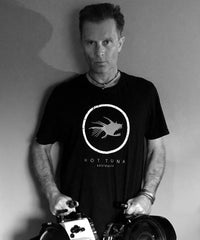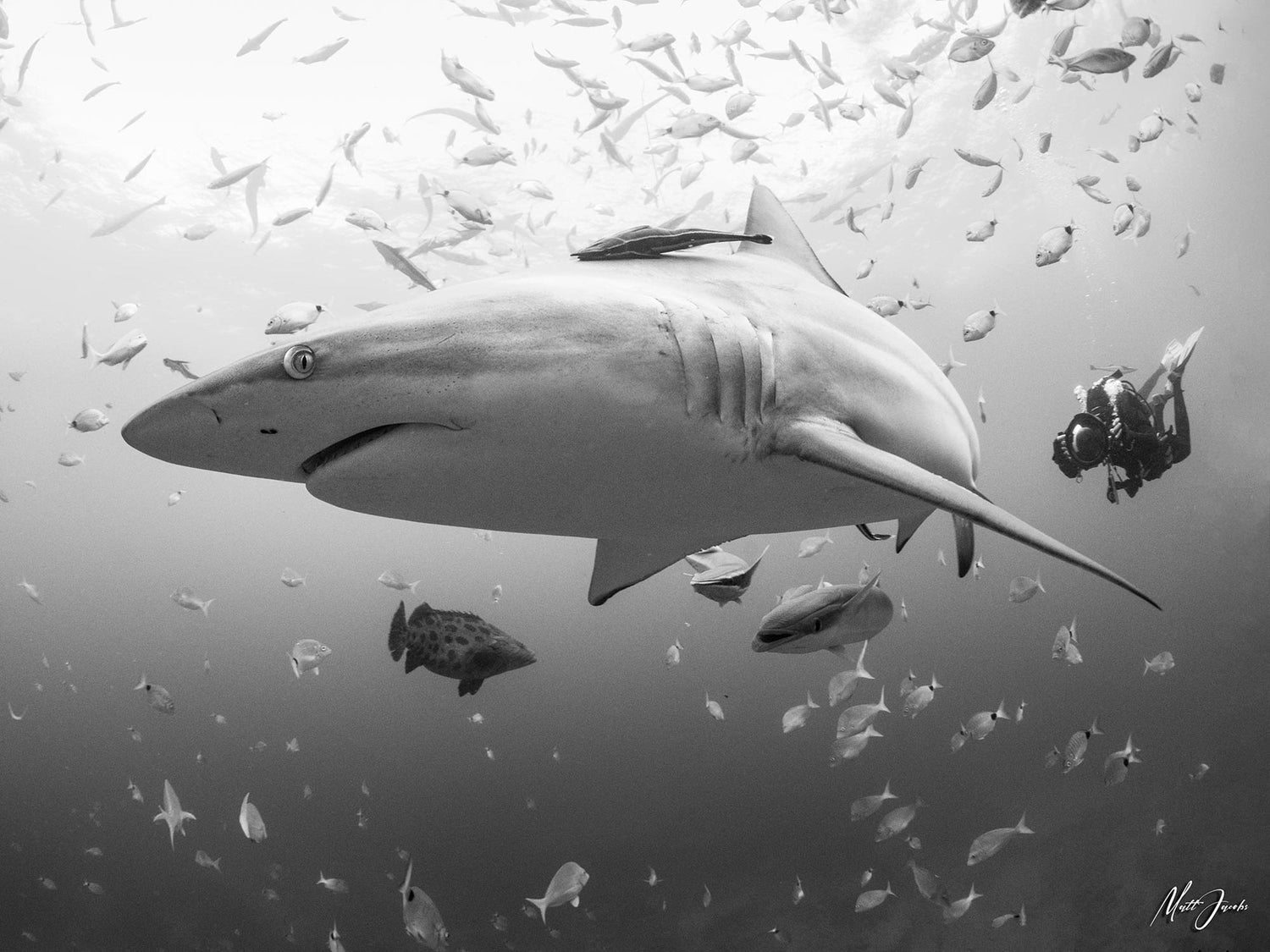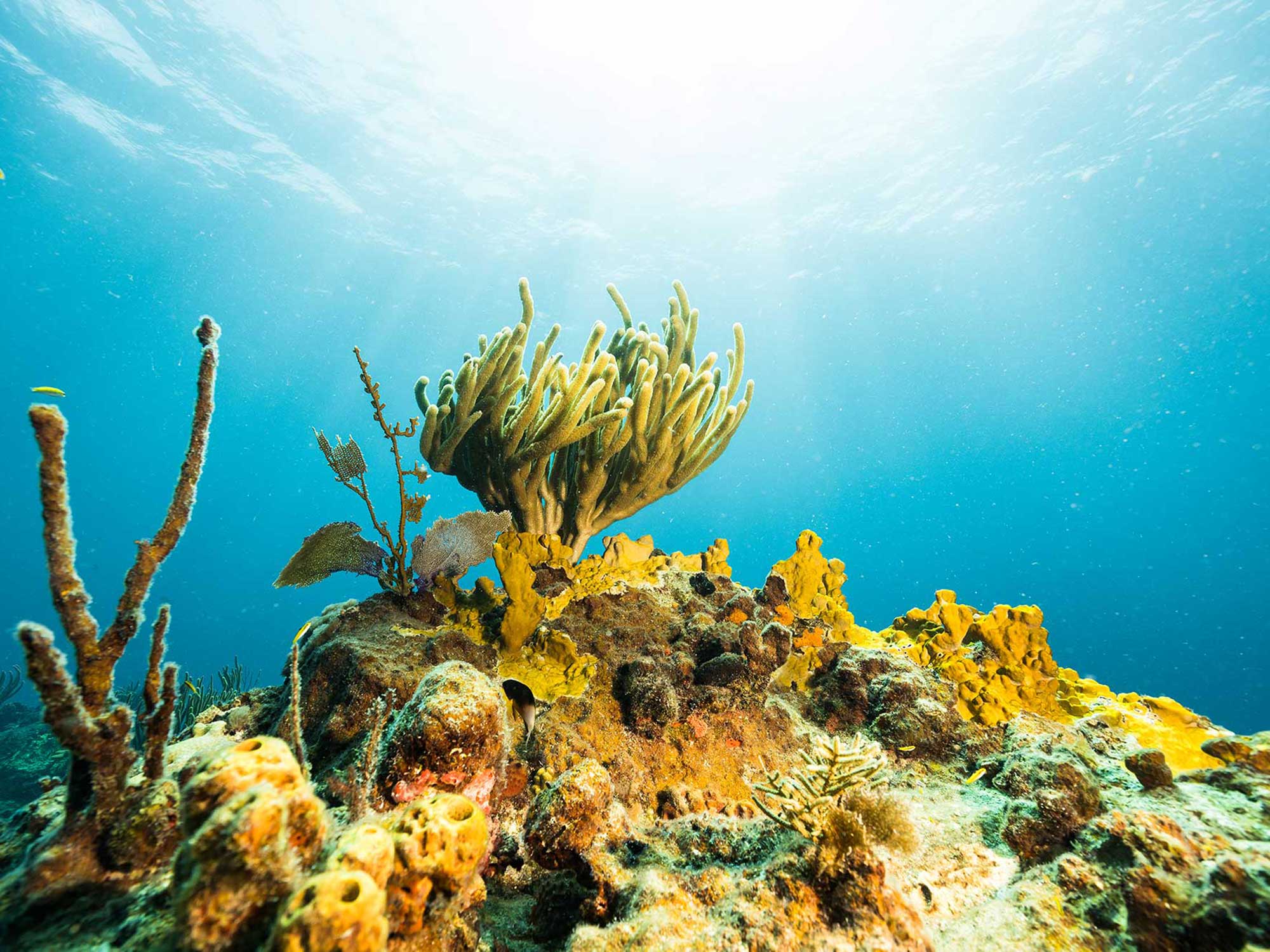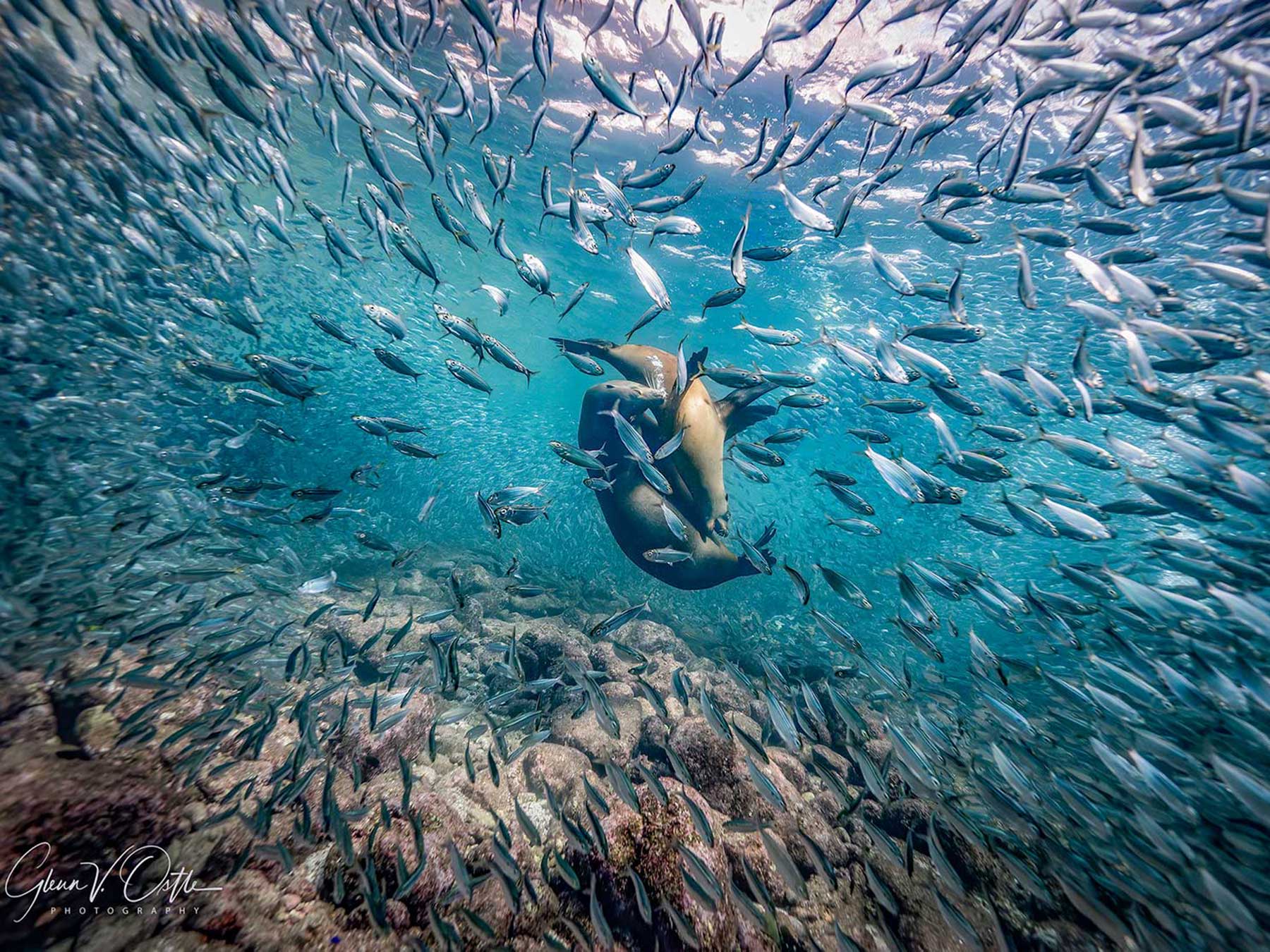By Matt Jacobs
“Can you teach me how to take underwater photos like yours?” I get asked this a lot, and without fail I politely decline. I’m self taught so who am I to teach the correct way to do things? I give talks on my underwater photography, of how I get the shots, I will give people my settings, but I don’t teach. Until now.
I’m back in South Africa. I was here in July for the sardine run and now I’m back for more than just the ocean, I’m here for my girlfriend Rae, dive instructor and shark expert. I’ve been impressed by her footage she gets from her little action camera, she seems to have the eye, a talent, a natural ability to see the image before she turns on the camera. I begin to wonder what she can do with decent glass, a bigger sensor and some tutorials on how to dial in a camera quickly underwater.

© Matt Jacobs
Two months earlier at home in London I stand in front of my open camera cupboard and pull out my beloved LUMIX GH4, it’s old now but still very capable. Can I just give this away though? This was part of my prize for winning the Lumix Videographer of the Year. It means a lot to me to just give it away. I pull out the Ikelite housing for it and the 8 inch dome. This too has sentimental memories for me. I’ve taken awarding winning shots with this housing, it’s been bitten by turtles, bumped by dolphins and I was holding it when I got decompression sickness in Egypt. But I digress, for that, and other stories are for another day. She will need a lens, something wide. She loves sharks, it’s got to be wide. Ultra wide. I grab an Olympus pro 7-14mm f2.8 from the shelf and box the whole lot up and send it south of the equator.
Class Begins
Wiping the sweat from my brow at the start of the onslaught of an African summer, I tell Rae: “Treat these o-rings like your life depends on them,” while showing her how to put the camera housing together. “Be obsessed with inspecting them before you close the housing." Ok, so I don’t teach, but here I am teaching...

© Matt Jacobs
I’ve met so many people who have said to me “I tried to learn photography but it was hard, the exposure triangle thing. I didn’t get it.” I’m not going to overload Rae with this, I’m going to teach her so she can see things change, by changing one thing. One thing at a time. Shutter speed. “Slow shutter speed will equal a blurry shark, fast shutter speed equals a sharp and crisp shark.” Aperture doesn’t exist right now, ISO is nonexistent. With just one thing to get her head round she easily and quickly grasps it.
When reviewing her images first time out she can see the results of changing shutter speed. Her first outing is impressive. She captures what some people comment is the best photo of the Produce shipwreck they have seen. I’m nervous. I don’t want her to be THIS good...

Rae's image of the Produce shipwreck. © Rae du Plessis
She comments that some of her shark images don’t look right, the gills are sharp but the eye is soft. Awesome, I think, there’s my segue and we effortlessly slide into aperture. I explain depth of field and light hitting the sensor. She understands instantly because she can see it in front off her. She has shutter speed and aperture fully grasped now and it’s off on a baited shark dive. ISO can wait.
She has to expertly bait for the sharks and hold her new big camera. Underwater photography is all about minimising the water we shoot through I tell her so get close and when you think you’re close enough, get closer. She gets close. Very close.
Protea
The next day is a change of scenery and we decide to head down to the famous Protea Banks at Shelly beach about an hour or so south along the coast. Protea Banks is a reef about 7k off the shore, a submerged shoal approximately 6 km long and 800 meters wide, with an average depth of around 30 meters. The reef is home to predators, such as bull sharks, tiger sharks, scalloped and great hammerheads and barracuda.

© Matt Jacobs
We load the pick-up with four air tanks and our gear. Rae throws me the keys and says:
“You’re driving”
“Me? Why? Don't you know how to drive?”
“Well, yeah I can drive, I just don't have a license”
“What if I hit a rhino or something? I’m from London, we don't have rhinos and things in London?”
Rae gives me this look that tells me I need to shut up now and start driving. Well, I think, at least they drive on the correct side of the road out here. I start driving.

Rae pictured here with Ikelite housings ready for adventure. © Matt Jacobs
On arriving at Shelly Beach, Rae scans the surf and tells me it looks angry, she seems concerned, takes me aside and gives me a serious safety briefing. If she’s concerned, I need to start worrying. I’ve perfected my “white knuckle death grip” at Aliwal Shoal but this looks another level. No way are we getting over those breakers alive.
I tell her my wetsuit is too tight around the neck to try to disguise the fact that my face is going pale with terror. But she knows. She senses fear like a T-Rex senses movement.
We are on the sea now with the waves getting taller and angrier by the second. We wait. And wait. The skipper looking for a way through. Looking for a way over. Still we wait. I’m hoping he will say we can’t launch and we can head back where I can pretend to look disappointed but then the boat suddenly launches forward with a ferocious roar and a path is expertly cut though the surf, smoother than I had hoped for. Smoother than I was praying for. I knew there was nothing to worry about...

Finding an upward angle and sharing space. © Matt Jacobs
Protea is alive underwater as we drift with the current some 2.7km with a baited drum. Blacktip sharks are with us and then bull sharks slowly appear from the deep and huge schools of hammerheads drift lazily by. Rae races towards them to get close. Trying to keep up with her is futile, with legs like a gazelle and free diving fins on she’s out of sight so I lazily drift with the bait drum waiting for sharks to come to me.
I’m using a Lumix GH6 with an Olympus Pro 8mm f1.8 fisheye so I need to be super close or they will be specs in the distance. I keep the sun behind me as I’m using ambient light and the sharks come in close now, real close. We have one more drift dive on the reef after this but sadly the viz is against us.
Back in Class
We slowly drive back to Umkomass, free of any rhino incidents and back at the dive centre I stress the importance of getting at the eye level or underneath your subject. Get at their eye level or under them and the images will explode with emotion and action and are sure to draw wows from whoever sees them. But Rae already does this naturally, this is her talent, she already has this part locked and loaded.

© Rae Du Plessis
I don't use strobes underwater and I’m at the mercy of God’s own sunlight. This means being aware of where that sun is and using it create your art, shooting into it can can create wonderful silhouettes and shooting with it can create magical light depending on the depth or time of day. Rae noticed her images shot at depth or in caves lost quality and were full of noise. Ah, Mr. ISO, we’ve been expecting you...
With shutter speed, aperture and ISO now fully understood, Rae’s camera is dialed into fully manual. I explain the final (and for me shooting only ambient light) the most critical part of the jigsaw, manual white balance. I give her an 18% grey plastic dome that she bungees to her belt and she can see her monitor explode with colour and contrast as she manually white balances every time the light changes. I use a red filter on my lenses as I’m used to shooting in Egypt where I need to neutralise the pure and consistent blue. In South Africa however, the water colour is rarely constant. It can change from green at the top and blue at the bottom and vice versa on every dive so filters are futile here.

© Rae Du Plessis
A Festival of Bulls
Another day, another baited dive. I do one dive with another group as Rae picks up a group of Americans who want to see bulls. She tells me to wait in the boat and she will pick me up somewhere on the sea to join them. I sit in the boat with the skipper, waiting. I feel like Captain Bligh as we just sit and wait. After what seems like 12 hours adrift with no water (it was 20 minutes, but patient I am not) she appears and I hand my SCUBA gear and camera over and I climb aboard the good ship Du Plessis.
We pass another dive boat from another company and they tell us there are no sharks to be seen today, they’ve tried baiting and nothing. Don’t bother, they tell us. Rae mumbles something under her breath, something that sounded like “hold my beer” and we set off. This group wants bull sharks and if anyone can find them, Shark Girl can. We are dropped at the site of Outside Edge.

© Matt Jacobs
The viz is superb but we descend into nothing. Nothing is here. We drift. And we wait. Slowly bull sharks pick up the scent and start to assemble way below us. We have a good group of divers who are calm and the sharks slowly come up, closer and closer. They feel more comfortable with each minute and move upwards towards us. I need to get close now and I need to get under them.
Bull sharks are wonderfully camouflaged against the sea bed and if you shoot down, they are lost against the reef and it becomes a non picture but it’s tricky to get under a bull. Blacktips are accommodating posers but bulls like to lurk just below you, they like to be wined and dined. I’ve found that by gently tilting the camera left and right they are attracted to the glint in the dome and they will move in fast to inspect if it’s a fish and will come in close but still slightly underneath ready to burst upwards. Bull sharks don’t have the best eyesight however and it’s thought they only see in black and white. With this in mind I’m careful not to make any jerky movements as my bare hands are close to the dome. With outrageous amounts of testosterone in their bodies and the most powerful bite pound for pound of any shark added to a reputation for aggression, I don’t want one of them becoming confused. These are big, powerful sharks.

© Matt Jacobs
They come in fast now towards the glint in the dome and only at the very last second do they turn as they realise I’m not prey, one is inches from my dome, I exhale quickly to sink and get under him and hit the shutter. I do this again and again. I glance at my air. I’m getting low. I’m between 25 and 30 metres down. This is precious and rare, I don’t want to surface. I want to stay here as a bull flexes and twists right in front of me in a magnificent muscular display, I hit the shutter. I glance at my air again and it’s only going one way. My heart says stay and keep shooting, my brain says no one will see these shots if you don’t start going up this very second. At this point Rae says she is going up and we slowly ascend leaving these noble creatures still circling below us in complete harmony with their environment. Just as they have done for millions of years. Millions of years before mankind began its relentless, brutal and pointless slaughter of them.
Back on the boat the Americans and I are whooping and back slapping in the afterglow of such an epic experience but Rae is quietly pulling the bait drums back onboard, still working. I often forget she is working.

© Rae Du Plessis
Back at the dive centre Rae uploads her images onto a drive and I feel she really has the potential to be a great underwater photographer. She speaks of a need to want to develop her own style, something that stands out as her own work. I think she is already moving towards that with only the short time she has had with the camera and housing.
Diving with sharks in South Africa is addictive. I always want more. I want them closer next time. I want them with their mouths open. I want their mouths wider. I want a tiger. But above all, I really want a Great White in my monitor. Stay tuned...
 Ambassador Matt Jacobs learned to dive in the Philippines while he was traveling around the world extensively as a photographer in the late 90's. It was only natural to combine his passion for photography with his love of the water. Egypt is now his spiritual home with a special fondness for the Red Sea. Matt is a Panasonic LUMIX Ambassador and his work has been published and sold as fine art internationally. In 2021 Matt became a fellow of the Royal Photographic Society for his black and white underwater images. Read more...
Ambassador Matt Jacobs learned to dive in the Philippines while he was traveling around the world extensively as a photographer in the late 90's. It was only natural to combine his passion for photography with his love of the water. Egypt is now his spiritual home with a special fondness for the Red Sea. Matt is a Panasonic LUMIX Ambassador and his work has been published and sold as fine art internationally. In 2021 Matt became a fellow of the Royal Photographic Society for his black and white underwater images. Read more...

Rae Du Plessis was born and raised in South Africa. She currently calls Umkomass (and Blue Ocean Dive Resort) home, where she's been a dive instructor for 7 years. She is respected worldwide by the thousands of divers she has guided around South Africa's famous Aliwal Shoal and the shark experiences she has given them. Ever present by her side on land (and often on the boat) is her Jack Russell, Nitrox. It's said you've not truly experienced South Africa unless you've been bitten by Nitrox. Although Rae has often carried a small camera on dives, her current underwater rig presents a new adventure, follow her on Instagram to follow along on her underwater photography journey: @rae_from_the_sea.
Additional Reading
An Insider's Guide to Diving Aliwal Shoal, South Africa
The Wild Coast | Sardine Run, Sharks, and South Africa
An Underwater Rockstar Among Royalty
Under Pressure | The Art of Underwater Filming with Matt Jacobs [VIDEO]













